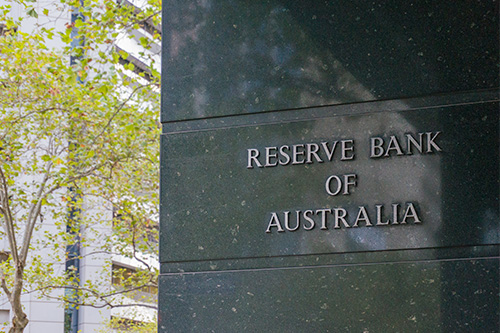
The Reserve Bank of Australia (RBA) continued with its monetary cycle upswing in September, hiking the cash rate by 50bps to 2.35%, the highest level since 2015.
Here are the highlights of RBA Governor Philip Lowe’s latest monetary policy decision statement:
On household spending
- Uncertainty remains on household spending — higher inflation and higher interest rates put pressure on budgets.
- Full effects of higher interest rates are yet to be felt in mortgage payments.
- Consumer confidence has already fallen, and house prices has started to decline in most markets.
- Many households have built up large financial buffers.
- Savings rate remains higher than pre-pandemic levels.
On labour market:
- The Australian economy is growing “solidly”, with the national income being supported by a record level of terms of trade.
- Unemployment rate declined to 3.4% in July, the lowest in 50 years.
- Job vacancies and job ads are at very high levels, which would support a further decline in unemployment over the coming months.
- Wage growth has picked up from the low rates in recent years.
On inflation:
- The board remains committed to returning inflation to the 2% to 3% target over time while keeping the economy on an “even keel”.
- Inflation in Australia is at its highest since the early 1990s and is expected to increase over the months ahead.
- There is an upwards pressure on prices from strong demand, tight labour market, and capacity constraints in some sectors of the economy.
- Inflation is set to peak later this year before declining to the target range.
- The central forecast is for the CPI inflation to be around 7.75% over 2022, over 4% in 2023, and 3% in 2024.
Overall, further increase in rates are expected over the months ahead.
“The size and timing of future interest rate increases will be guided by the incoming data and the Board's assessment of the outlook for inflation and the labour market,” Dr Lowe said.
“The Board is committed to doing what is necessary to ensure that inflation in Australia returns to target over time.”
PropTrack senior economist Eleanor Creagh said the central bank’s move, which ensures inflation expectations remain anchored around the 2% to 3% target, could potentially further drag down dwelling prices.
“The fastest rise to the cash rate since 1994 has seen home prices falling across the country, with prices nationally now sitting 2.7% below their March peak,” she said.
“As borrowing capacities are constrained and buyer’s budgets shrink, the most expensive markets of Sydney and Melbourne are leading the price declines. Prices in Sydney are now below levels recorded in August last year.”
This month’s rate hike will further increase borrowing costs, and the speed at which the cash rate would grow over the next RBA meetings could determine the pace and depth of dwelling price declines.
Ms Creagh said that despite this outlook, property markets are expected to see some action over the coming months due to the spring-selling season.
“The good news for buyers is this spring is set to be much less competitive than last — there’s a lot more choice and less urgency, which could create opportunity for some,” she said.
“The balance in market conditions could make it easier to get into the market as stock isn’t moving as quickly and the fear of missing out has subsided.”
However, it remains prudent for borrowers to educate themselves as to how these recent rate changes would impact their home loans and repayments.
“The lagged effect of rate rises, the large share of variable rate borrowers ahead on repayments and some borrowers on fixed terms yet to expire, means many mortgage holders have not yet felt, or are only now beginning to feel, the impact of the initial rises,” Ms Creagh said.
Here’s how much mortgage repayments could grow with the 50bps hike in each capital city, according to PropTrack data:
|
Capital City |
Median Sale Price (12 months) |
Loan size |
$ increase in monthly repayments based on a 0.50% increase |
|
Greater Sydney |
$1,075,000 |
$860,000 |
$249 |
|
Greater Melbourne |
$803,000 |
$642,400 |
$186 |
|
Greater Brisbane |
$630,000 |
$504,000 |
$146 |
|
Greater Adelaide |
$580,000 |
$464,000 |
$134 |
|
Greater Perth |
$510,000 |
$408,000 |
$118 |
|
Greater Hobart |
$690,000 |
$552,000 |
$159 |
|
Greater Darwin |
$515,000 |
$412,000 |
$119 |
|
Australian Capital Territory |
$837,000 |
$669,600 |
$193 |
Collections: Mortgage News Interest Rates

 Fact checked
Fact checked

Share